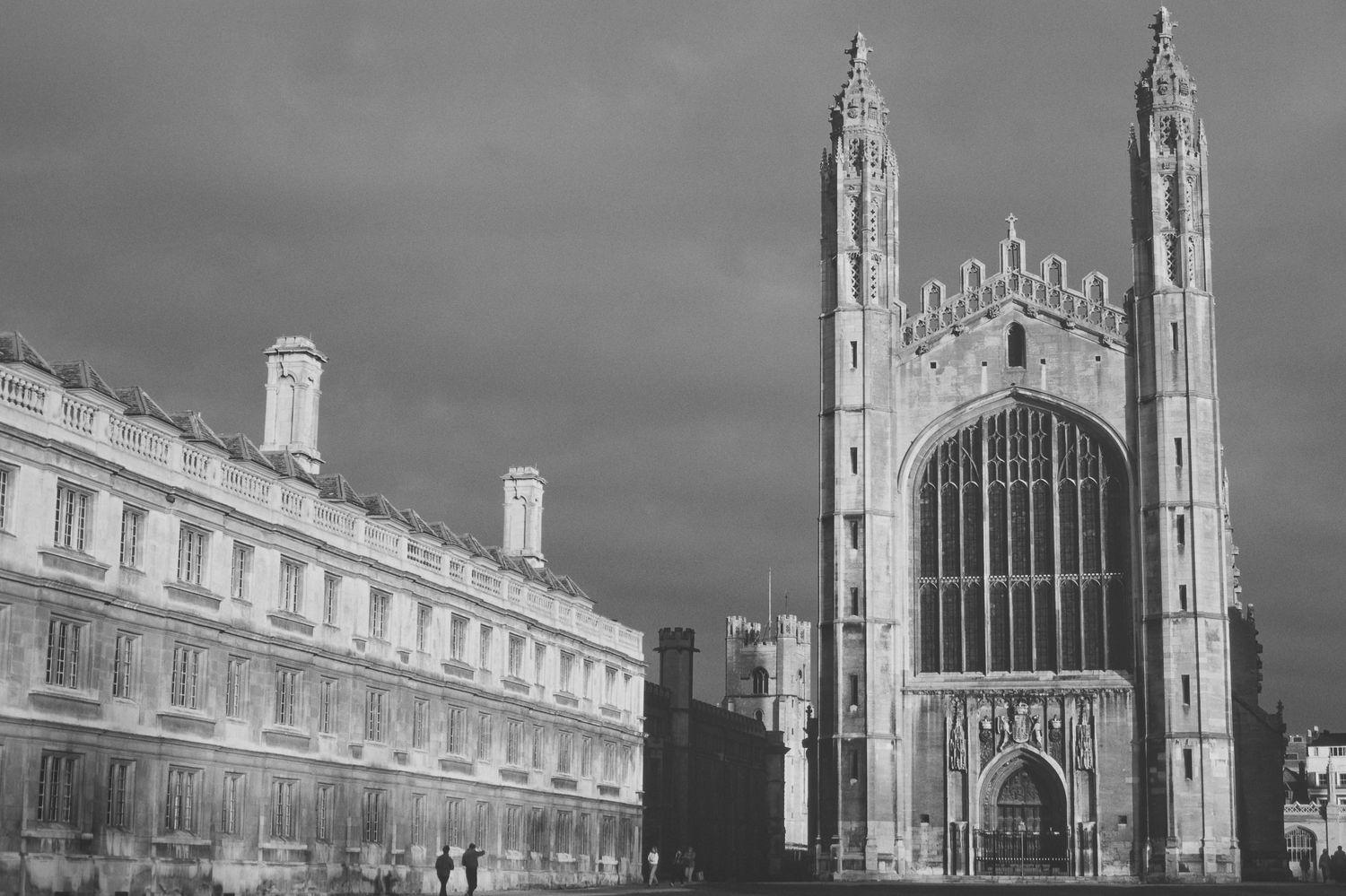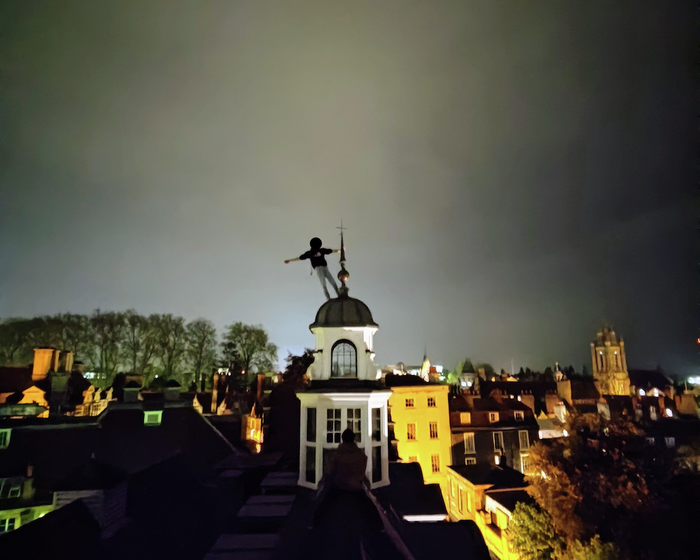In the summer of 1984, as Easter term drew to a drowsy close, Richard Tomlinson heard an unfamiliar voice calling his name across Gonville court. Christopher Pilchard, a tutor in law, was peering out of his ground-floor window. “You’re Tomlinson, aren’t you?” he asked. Upon hearing of Tomlinson’s plans to join the navy, he said: “If you ever change your mind, but would like to try your hand at another form of government service, let me know.”
That same month, Ben Macintyre approached his tutor at a graduation party and made some “clumpingly obvious remarks” about his interest in foreign affairs. He and his tutor exchanged significant glances - perhaps a hitched eyebrow or two - and, soon after, a brown envelope arrived with an invitation to meet a Major Halliday in Whitehall.
“Every Cambridge college had a talent spotter”
The classic tap on the shoulder: a glass of sherry with a wheezing tutor, a handshake in an ivy-clad court. The University has produced a long line of spies, not least the infamous Cambridge Five. At least until the 90s, every Cambridge college reportedly had a ‘talent spotter’ like Pilchard. “The chaplains were often how it was done,” Andrew Lownie tells me over the telephone. He read history at Magdalene from 1981 to 1984, during which time he was President of the Cambridge Union. “Any don with a close connection to the intelligence services was asked to keep an eye out for possible recruits. Maybe they had written about it or served in it, or maybe they were just good chaps.”
Richard Dearlove, former SIS Chief, was Master of Pembroke until 2015, and now chairs the Cambridge Security Initiative, which remains a hub for ‘academics and practitioners from the intelligence and security communities’. As recently as 2011, a Caius student claimed they had received an anonymous letter containing an invitation to Whitehall, followed by a meeting about working for MI6.
Spotters weren’t the only recruitment channel open to Cambridge finalists. Annie Machon, who studied classics at Girton from 1986 to 1989, initially applied to the Foreign Office. “I got a letter from the Ministry of Defence, apparently, saying there may be other jobs I’d find more interesting,” she tells me over video call, back perfectly straight, hair perfectly coiffed. “There was a number they asked me to call and that was it. My gut instinct was, fuck, it’s MI5. [...] Ten months later, there I was.”
What sort of people were they looking for? In particular, the Cambridge talent spotters targeted students with foreign language abilities. “I know that one of my friends was recruited because he had travelled in strange places during his year off,” says Lownie.
Some things, it seems, haven’t changed. Last Michaelmas, the AMES faculty circulated an email advertising positions for Mandarin speakers at GCHQ, MI5 and MI6. A representative for the Careers Service told Varsity: “We interact with the Secret Services the same as we would for other employers. We have sent emails to AMES students for some of their vacancies and presentations in the past, as they wanted to advertise to students with particular language skills.”
“The James Bond wannabes were immediately ejected”
Once the existence of the Secret Services entered official public territory in the late 1980s, MI5 began placing cryptic advertisements in newspapers. Former MI5 officer David Shayler responded to an ad emblazoned with the words ‘Godot isn’t coming’, thinking it was a call for journalists. Soon after, they began openly advertising for recruits. “20,000 people would apply, out of which perhaps five would actually get recruited,” said Machon, who was trained as a recruiter herself. “It was always the James Bond wannabes who were immediately ejected from that process.”
The recruitment and training process remains shrouded in mystery, but the SIS website tells candidates to expect security checks, including an ‘honest conversation’ about lifestyle, finances, and relationships. Macintyre wrote about being vetted for homosexuality in his first meeting (“Are you, um, you’re probably not, are you?”), while Tomlinson described being assigned a pub “in which we had to approach a member of the public and extract his or her name, address, date of birth, occupation and…passport number”.
The stereotypical spy is white, chino-clad, and publicly-educated. “This may have changed,” says Lownie, “but they used to bring in people who were clearly all-British, maybe had a family tradition with the intelligence services or the Armed Forces.” Until 1973, women were required to resign if they wished to marry, to say nothing of the double-edged image perpetuated by Bond films and similar media.
In recent years, there has been an attempt to dispel these ossified stereotypes. Technology is the new intelligence frontline, which means “computer geeks” are now in high demand. MI5 has been named the UK’s best LGBTQ+ employer.
Last year, MI5, MI6 and GCHQ altered eligibility requirements for new recruits, no longer seeking at least one British parent, which caused the BBC to declare that ‘the days of the tap on the shoulder at Oxford or Cambridge are long gone’. MI6 launched its first TV ad in 2018, and they now actively seek recruits from minority ethnic groups. “We have to go to people that would not have thought of being recruited to MI6,” Alex Younger, then SIS Chief (‘C’), said in 2017.
These bids for diversity aren’t simply a gesture of goodwill. “When the war on terror started twenty years ago, the specialist surveillance teams were still mainly white,” says Machon. In some situations, these agents would “stick out like a sore thumb.”
Cambridge’s association with the Secret Services spans almost a century. Could the old Oxbridge tap on the shoulder really have escaped the institution? “I’m sure it still happens,” says Machon. “Interesting people in interesting places, you know, but I think it’s probably a far smaller proportion of recruits that way now.”


